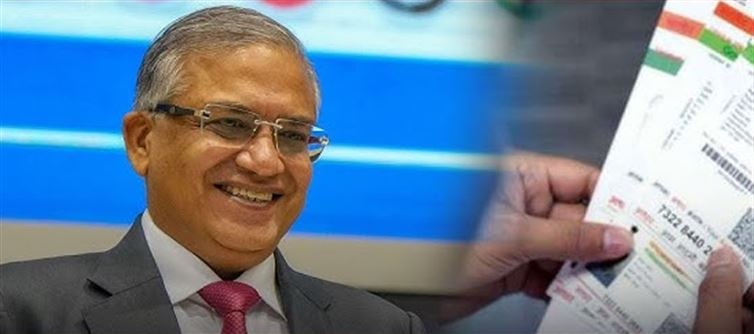
⚡ Aadhaar Bombshell: India’s Most Hyped ID Card Just Got Exposed
CEC Drops Truth Bomb — Aadhaar Isn’t Proof of Birth, Age, or Citizenship. So… What Exactly Is It?
🔥 The Illusion of Identity: Aadhaar’s Shocking Limitations
For over a decade, Aadhaar has been sold as the holy grail of indian identity — the ultimate key to everything from SIM cards to bank accounts, LPG subsidies to passports. But in one blunt revelation, Chief election Commissioner Gyanesh Kumar has shattered that illusion.
“Aadhaar is not a proof of date of birth, age, or citizenship,” he said — a statement that rippled through the nation like an identity crisis detonated in slow motion.
So if Aadhaar isn’t proof of who we are, when we were born, or even that we belong here — what’s left of the narrative we’ve been fed all these years?
🧾 Not a Birth Certificate. Not a Citizenship Card. Just… a Number.
Let that sink in. The world’s largest biometric ID system — 1.3 billion people enrolled, ₹12,000+ crore spent — isn’t legally valid to confirm your birth date or your nationality.
Everywhere you go, Aadhaar is demanded — to vote, to open a bank account, to get a SIM card, even to die in peace with a death certificate. Yet, legally, it doesn’t certify your age, your origin, or your right to call yourself an indian citizen.
The irony? The government itself now admits that Aadhaar is, at best, an identity linkage tool, not an identity verification document.
📱 The jio Era: Aadhaar’s Real Launchpad
Let’s not sugarcoat it — Aadhaar’s mainstream rise wasn’t about governance, it was about telecom.
Back in 2016–17, as reliance jio exploded onto the scene, Aadhaar’s biometric eKYC became the golden ticket for instant SIM card activation. The government’s wallet PLATFORM' target='_blank' title='digital-Latest Updates, Photos, Videos are a click away, CLICK NOW'>digital infrastructure and Jio’s commercial ambitions found a perfect match — convenience disguised as innovation.
Millions lined up to scan their fingerprints and irises, not because they understood Aadhaar’s implications, but because they wanted free data and cheap calls. In hindsight, Aadhaar’s “mass adoption” looks less like a revolution and more like a nationwide onboarding campaign for telecom convenience.
🕳️ The Legal Black Hole Nobody Wants to Talk About
Despite its ubiquity, Aadhaar’s legal footing is fragile. The supreme Court’s 2018 verdict limited its mandatory use — only for welfare schemes and PAN linking. Yet, private players, banks, and even schools continue to treat it like gospel.
Now, with the election commission openly dismissing Aadhaar as valid proof of citizenship or age, the credibility of this so-called “master key” stands in ruins.
So the big question remains:
👉 If Aadhaar can’t prove you’re Indian…
👉 If it can’t prove your age…
👉 If it can’t even prove when you were born…
Then why is it still the most demanded document in India?
💣 The Identity Mirage: Sold, Scanned, and Stuck
Aadhaar was pitched as empowerment — a bridge between citizen and state. Instead, it’s turned into a wallet PLATFORM' target='_blank' title='digital-Latest Updates, Photos, Videos are a click away, CLICK NOW'>digital leash — demanded everywhere, trusted nowhere, and validated by nothing.
The myth has finally cracked: India’s grand experiment in identity digitization has ended up exposing a terrifying truth — we built a surveillance empire on a foundation of data without definition.
And now, as the Chief election Commissioner’s statement goes viral, one can’t help but ask —
Was Aadhaar ever about identity at all, or just about control?




 click and follow Indiaherald WhatsApp channel
click and follow Indiaherald WhatsApp channel